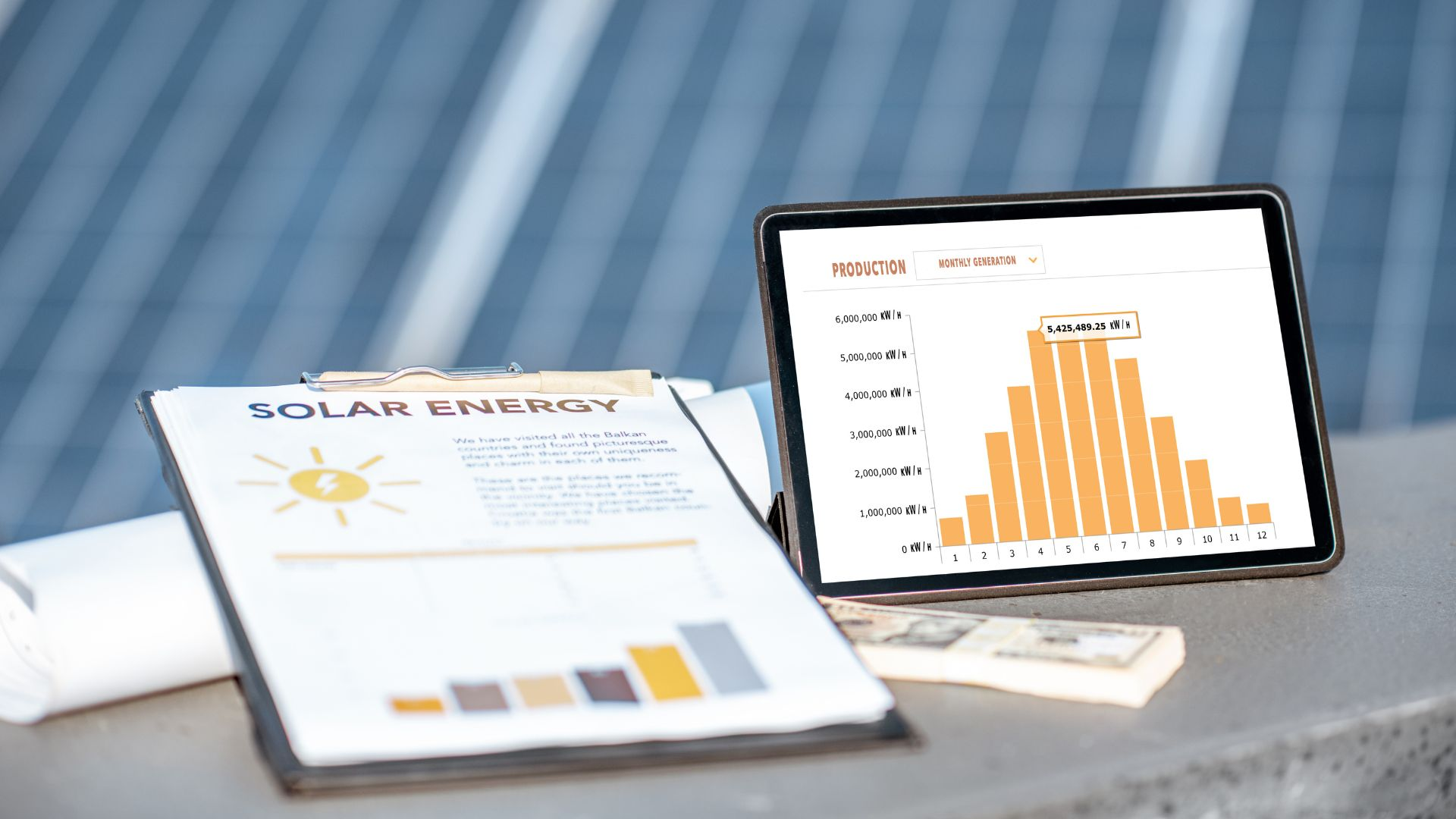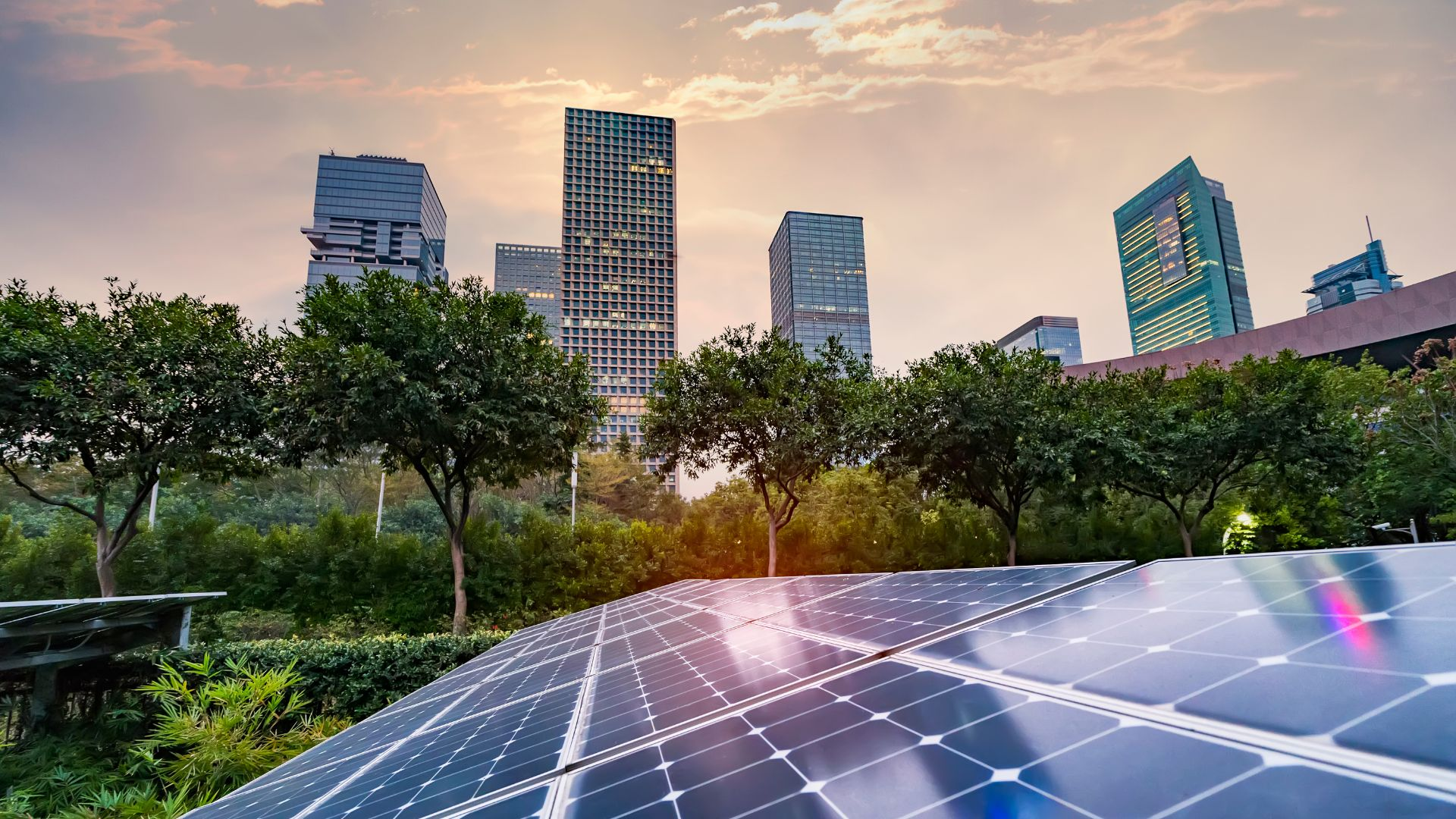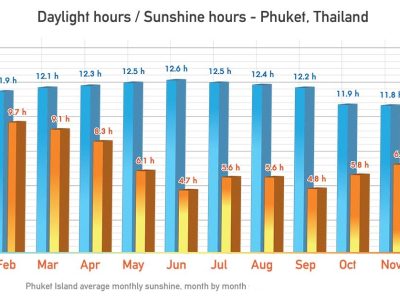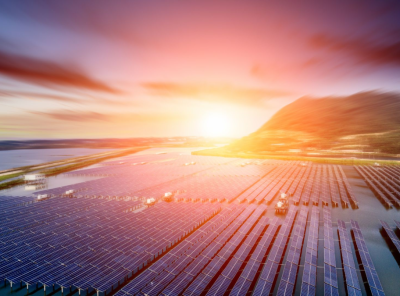5 Articles About Solar Power in South East Asia
Welcome to our comprehensive guide on Solar Power in South East Asia. This series, divided into five insightful articles, aims to shed light on the growing significance of solar energy in this vibrant and diverse region. From understanding the basics of solar power to delving into its impact on the local economies, policies, and environment, we’ll take you on an enlightening journey through the world of renewable energy.
Update: The 2nd Article in our series has now been uploaded please check it out using the link at the bottom of this article. And also the 3rd article in this series with 19 Fun Facts about Solar Energy, please let us have your feedback.
In this first article, we’ll lay the groundwork by exploring the current state of solar power in South East Asia, its potential, and why it matters. This piece will serve as your stepping stone into the world of solar energy in the region, and each subsequent article will delve deeper into more specific aspects. So, whether you’re a seasoned energy professional or simply a curious reader, there’s something for everyone in this series. Let’s embark on this solar-powered journey together.
The Basics of Solar Power


Solar power is a term that’s often thrown around in conversations about renewable energy and sustainability. But what exactly is it? Simply put, solar power is energy from the sun that’s converted into thermal or electrical energy. It’s the cleanest and most abundant renewable energy source available.
The process begins with sunlight—our most reliable source of energy. When sunlight hits the cells in a solar panel, it causes electrons to move, creating a flow of electricity. This is known as the photovoltaic effect, and it’s the principle behind solar power generation.
There are two main types of technologies used to harness solar energy: solar photovoltaic (PV) systems and solar thermal systems. Solar PV systems convert sunlight directly into electricity using semiconductors. On the other hand, solar thermal systems use sunlight to heat water or air for use inside.
Solar energy has several advantages. For one, it’s renewable, meaning we won’t run out of it as long as the sun exists. It’s also environmentally friendly—unlike fossil fuels, solar power doesn’t release harmful greenhouse gases. Plus, it can reduce electricity bills, and with advancements in technology, solar panels are becoming more efficient and affordable.
However, solar power isn’t without its challenges. The initial cost of installing solar panels can be high, and the efficiency of solar panels can be affected by weather conditions. Despite these challenges, the benefits of solar power make it a promising solution for our energy needs.
The Current State of Solar Power in South East Asia


South East Asia’s solar energy market is on a significant rise. According to Mordor Intelligence, the market is segmented by type into Solar Photovoltaic (PV) and Concentrated Solar Power. Despite the considerable potential for renewable energy in Southeast Asia, current renewable sources, including hydropower and bioenergy, meet only around 15% of the region’s energy demand. However, the solar power capacity in the region saw a significant increase, more than doubling from 10.4 Gigawatt to 22.9 GW between 2019 and 2020.
Countries within South East Asia are setting ambitious goals for solar power. For instance, Singapore, driven by its commitment to carbon goals and the Paris Agreements, has set forth ambitious solar targets. Specifically, the country aims to achieve 1.5 gigawatts of PV capacity by 2025 and 2 gigawatts by 2030. Furthermore, solar power is expected to experience exponential growth across five of Asia’s biggest economies.
A diverse range of progressive solar energy policies has been introduced across several Southeast Asian countries, significantly accelerating the expansion of this sector. Malaysia, in particular, has undertaken comprehensive measures to bolster solar adoption, contributing to the sector’s impressive growth. In Thailand, a pivotal player in the region’s renewable landscape, the Power Development Plan (PDP) spanning from 2018 to 2037, holds a remarkable vision. It anticipates that solar energy will play an integral role, with projections indicating that it will comprise more than 50 per cent of the total energy production by 2037. This strategic commitment underlines Thailand’s determination to transition towards sustainable energy sources and underscores the potential impact of solar energy on reshaping the nation’s energy landscape.
In short, as it stands, solar power has grown tremendously in Southeast Asia in recent years. Despite some challenges, the region is making considerable strides in harnessing the power of the sun, setting a strong foundation for a sustainable future.
The Potential of Solar Power in South East Asia


South East Asia, a region rich in sunlight, has an untapped potential to be a global leader in solar power. The abundant sunlight that the region receives can be harnessed to produce clean electricity, not only for the urban areas but also for the millions living in remote locations.
One of the key potentials lies in its geographical advantage. The equatorial location of the region means it receives an average solar radiation of about 4000–5000 hours per year, which is among the highest in the world. This makes it an ideal place for solar power generation.
Moreover, the region’s growing population and economic development are increasing the demand for energy. Solar power can help meet this demand while reducing reliance on fossil fuels. It’s a win-win situation – meeting energy needs while combating climate change.
In addition to environmental benefits, solar power also has significant socio-economic potential. It can generate employment opportunities in manufacturing, installation, and maintenance of solar panels. These jobs can contribute to the economic growth of the region.
Furthermore, off-grid solar systems have transformative potential in rural and remote areas. They can provide reliable electricity to communities that are otherwise excluded from the grid, improving their quality of life and opening up new economic opportunities.
Lastly, advancements in technology and decreasing costs of solar arrays are making solar power more affordable and accessible. As a result, the global capacity and adoption of solar power are expected to accelerate in the coming years.
Challenges and Solutions of Solar Energy
Despite the immense potential, harnessing solar energy in South East Asia isn’t without its challenges. However, with every challenge comes an opportunity to innovate and find solutions. Let’s explore some of these challenges and potential solutions:
Challenge 1: High Initial Costs
While the long-term benefits of solar energy are undeniable, the high initial investment for installation can be a deterrent.
Solution: Governments and private sector companies can offer financing options, subsidies, or incentives to make solar installations more affordable. Additionally, the cost of solar panels continues to decrease as technology advances, making it increasingly accessible.
Challenge 2: Intermittency of Solar Power
Solar generation is dependent on sunlight, making it an intermittent energy source. This can pose problems for grid stability and reliability.
Solution: Investment in energy storage technologies, such as batteries, can help store excess power during the day for use during night-time or cloudy days. Moreover, integrating solar power with other renewable sources of energy can also help maintain a consistent energy supply.
Challenge 3: Land and Environmental Concerns
Large-scale solar farms require substantial land, which can lead to deforestation and habitat loss.
Solution: Implementing solar projects in already developed areas or co-locating them with agriculture (agrovoltaics) can reduce environmental impact. Floating solar photovoltaic systems on water bodies is another innovative solution that saves land while also reducing water evaporation.
Challenge 4: Lack of Skilled Workforce
The installation and maintenance of solar systems require a skilled workforce, which is currently limited in the region.
Solution: Investing in education and vocational training programs can help develop a skilled workforce ready to take on jobs in the solar industry.
Challenge 5: Regulatory Hurdlesnonexistent
In many South East Asian countries, regulatory frameworks for renewable energy are either nonexistent or not sufficiently developed. This can create uncertainty for investors and slow down the adoption of solar power.
Solution: Governments need to establish clear and supportive policies that encourage investment in the solar sector. This could include feed-in tariffs, power purchase agreements, or tax incentives for solar projects.
Challenge 6: Infrastructure Constraints
The existing grid infrastructure in some parts of South East Asia may not be equipped to accommodate a significant influx of solar power.
Solution: Investments in modernizing and upgrading the grid infrastructure are crucial. Smart grids and advanced metering technologies can also facilitate the grid integration of solar power.
Challenge 7: Public Perception and Awareness
Despite the benefits of solar power, public awareness about its potential and how it works remains limited in certain areas. This can hinder the adoption of solar energy.
Solution: Public education campaigns and community engagement initiatives can help increase awareness about the benefits of solar power and how it contributes to sustainable development.
While these challenges may seem daunting, they are not insurmountable. With concerted efforts from governments, businesses, and communities, South East Asia can overcome these barriers and unlock the full potential of solar energy.
Impact of Solar Power on Local Economies and Environment
The adoption of solar power has far-reaching implications beyond just energy production. It can spur economic growth and bring about significant environmental benefits. Let’s delve into how:
Economic Impact
Solar power can be a significant driver of local economies in several ways:
1. Job Creation: The solar industry offers a range of jobs from research and development and manufacturing to installation and maintenance of solar panels. According to different sources, renewable energy could create over 500,000 jobs in Southeast Asia by 2030, with solar photovoltaic leading the way.
2. Energy Cost Savings: By harnessing the power of the sun, households, and businesses can significantly reduce their electricity bills. This leaves more money to be spent elsewhere in the economy.
3. Energy Independence: Solar power can reduce reliance on imported fossil fuels, keeping more money within the local economy and making it less vulnerable to fluctuations in global energy prices.
4. Boost to Local Businesses: The installation and maintenance of solar power systems often involve local businesses, providing them with new opportunities and income streams.
5. Attracting Investment: As countries around the world are increasingly committed to reducing their carbon footprint, regions with established solar industries can attract significant investment from both domestic and international sources.
6. Tax Revenue: Large-scale solar installations can contribute substantial tax revenue for local and national governments, supporting public services and infrastructure.
7. Price Stability: Solar power can help stabilize electricity prices in the long term. Unlike fossil fuel-based energy, which is subject to global price volatility, the ‘fuel’ for solar power – sunlight – is free and abundant
Environmental Impact
Solar power also has significant environmental benefits:
1. Reducing Greenhouse Gas Emissions: As a clean energy source, solar power produces no greenhouse gas emissions during operation, helping to mitigate climate change.
2. Conserving Water: Unlike conventional power generation methods, solar power uses very little water. This can help conserve precious water resources, particularly in water-scarce regions.
3. Improving Air Quality: By reducing the need for fossil fuel power generation, solar power can lead to improvements in air quality. This can have significant health benefits for local populations.
4. Reducing Land Degradation: Unlike other forms of energy production, solar farms can be installed on rooftops or used in dual-use farming, limiting their impact on natural habitats and reducing land degradation.
5. Mitigating Resource Depletion: Solar power reduces the demand for finite resources such as coal, oil, and natural gas, contributing to sustainable resource management.
6. Lowering Noise Pollution: Solar power systems operate silently, eliminating the noise pollution that often accompanies other forms of energy production.
7. Enhancing Biodiversity: Solar parks can be designed to provide habitats for local wildlife, enhancing biodiversity
All in all, the impact of solar power extends beyond the energy sector. It can boost local economies, create jobs, save costs, and bring about significant environmental benefits.
Conclusion: Solar Power in South East Asia
As we step into a future where sustainability is not just an option, but a necessity, the role of solar power in shaping our world cannot be overstated. The potential is immense for regions like South East Asia, blessed with abundant sunlight.
The economic and environmental impacts of solar power present a compelling case for its adoption. From creating jobs and boosting local economies to reducing greenhouse gas emissions and conserving water, solar electricity is a win-win solution for both people and the planet.
Yet, the journey towards a solar-powered future requires concerted effort. It calls for strategic investments, supportive policies, and public awareness. We must seize the opportunity to transform challenges into stepping stones, leveraging the power of the sun to light up homes, fuel industries, and drive sustainable development.
As we continue to make new installations to harness this clean, abundant, and renewable source of energy, we are not just powering our cities and towns – we are empowering our communities and paving the way for a brighter, more sustainable future.
In South East Asia and beyond, the sun is rising on a new era of energy. Let’s embrace it, and together, let’s illuminate the path toward a sustainable future.
Solar Power: Frequently Asked Questions
What are the main types of solar technologies?
The main types of solar technologies include photovoltaic systems that convert sunlight directly into electricity and solar thermal systems other technologies that use heat from the sun for heating or electricity generation.
How do solar technologies work?
Solar technologies work by capturing sunlight with solar cells (in photovoltaics) or mirrors (in solar thermal systems), then heating water and converting it into usable energy – either electricity or heat.
Are all solar energy technologies reliable?
Yes, with proper installation and maintenance, all major solar energy technologies, including both photovoltaics and solar thermal systems, can provide reliable energy for many years.
What is the efficiency of solar PV panels?
Solar PV conversion efficiency refers to the percentage of solar energy that’s converted into electricity by the panels. Most commercial panels, including utility-scale solar PV systems, have efficiencies ranging from 15% to 20%.
What is the average cost of solar panels in 2023?
As of 2023, the average cost of solar panels is about $16,000, with prices ranging from $4,500 to $36,000, depending on the type and model.
What are the primary methods used to generate electricity?
Electricity is primarily generated using steam turbines powered by fossil fuels, nuclear energy, biomass, geothermal, and solar thermal energy. Other methods to generate electricity include the use of electromechanical generators and hydroelectric power plants that convert the energy of flowing water into electricity.
What are the different types of renewable energy sources and which countries are the leading producers?
The different types of renewable energy sources include wind power, solar power, bioenergy (organic matter burned as a fuel), hydroelectric power, and geothermal resources. These natural resources can be continuously replenished and converted into electricity or other forms of energy. As of 2023, China, Brazil, Canada, the U.S., and Russia are the leading hydropower producers, which is currently the world’s biggest source of renewable energy.
What is a CSP power plant?
A CSP (Concentrated Solar Power) power plant generates electricity by using mirrors or lenses to concentrate sunlight onto a central receiver. Unlike traditional photovoltaic cells, which directly convert the sun’s rays into electricity, CSP power plants focus sunlight to heat a fluid, hot water, typically used to drive a turbine and generate power.
Who made the first solar cell?
The first practical photovoltaic cell, converting the sun’s energy into electricity, was developed by Bell Labs researchers in 1954, led by Daryl Chapin, Gerald Pearson, and Calvin Fuller.
What is thermal storage?
Thermal storage optimizes energy use by storing heat or excess energy generated, benefiting both solar companies and electrical grid stability.
Join us next week for part two of our Solar Power in South East Asia series.




